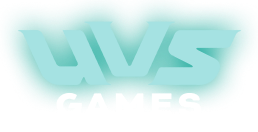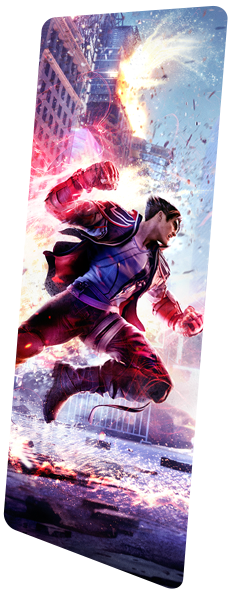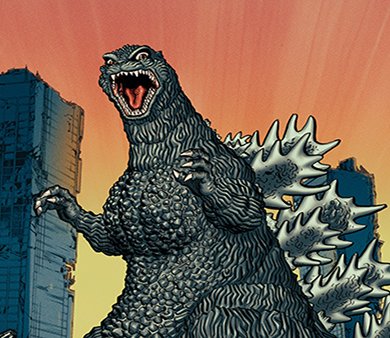
2024 Rules Updates Announcement
Good day, UniVersus players! Today we will be revealing some big updates to the core rules of UniVersus as well as explaining the reason for the change or update. Each of the items listed below will take effect on January 1st, 2024. In addition, the updates to the Rulebook will be posted no later than that date.
Rules to be updated for 2024:
-
Minimum deck size increase
-
Zone publicity changes (Momentum and Card Pool)
-
Identity & Titles
-
Designating successful attacks (Attacks that dealt damage)
-
Multiple ability functional update
Minimum deck size increase
When we launched MHA Spotlight as the premier format for UniVersus back in 2021, there was a lot of talk about deck sizes and playset counts. There would be quite a bit less cards available to players to craft decks from and the previous minimum deck size was determined to be too large to allow for variety in deckbuilding. Many decks would feel the same because they would be forced to play similar builds just to meet minimum deck size. So with the launch of MHA, we lowered the minimum deck size to 50 cards plus a starting character.
As we released sets, it was always our intention to increase the deck size back up, but we struggled to land on a benchmark moment in the game. How many sets would be enough? Why would we be making the change now? Does the data indicate it to be the right time? Well, with the refocus to creating the UniVersus Standard Format, it felt like the right time to update the minimum deck size for Organized Play. With this, constructed format decks will now require a minimum of 60 cards, plus a starting character. We know there is now enough variety to allow for creative deck building and variety in the available card pool that this increased deck size will not negatively impact deck construction.
Zone publicity changes
There are a few holdovers from the historic legacy of UniVersus that we feel have continued solely out of a mentality of “well, it’s always been that way”. This includes having different rules for what face down cards you can look at, and which you can’t. As it stands, often when teaching someone new the game, they tend to question why they can look at face down foundations, but not momentum or cards in the card pool. And usually the answer is simply “that’s just what the rules say”.
Now, we’re not looking to make changes simply for the sake of making changes. But we have committed ourselves to ironing out some of the wrinkles in game design when possible. We already allow notes to be taken, so momentum being unknown is only a slight inconvenience most of the time, and with the increased occurrence of face-up momentum mechanics, it is often a moot point. We want to decrease some of the learning pain points, and after many design sessions and discussions, we think it is time to change these zones to work more like the rest of the game. Moving forward, face down cards in momentum and the card pool will be private zones, rather than unknown. This means that the player may look at their own cards in both zones now, when they wish to.
Identity & Titles
By now you’ve probably seen that in upcoming products the naming convention for our character cards is changing. The specific mechanical details of this update can be better understood by covering two key terms: Identity and Title. Identity is the core of the character, the main name or moniker that they are known to the world they exist in by. Title is any particular alias or characterization attributed to the character.
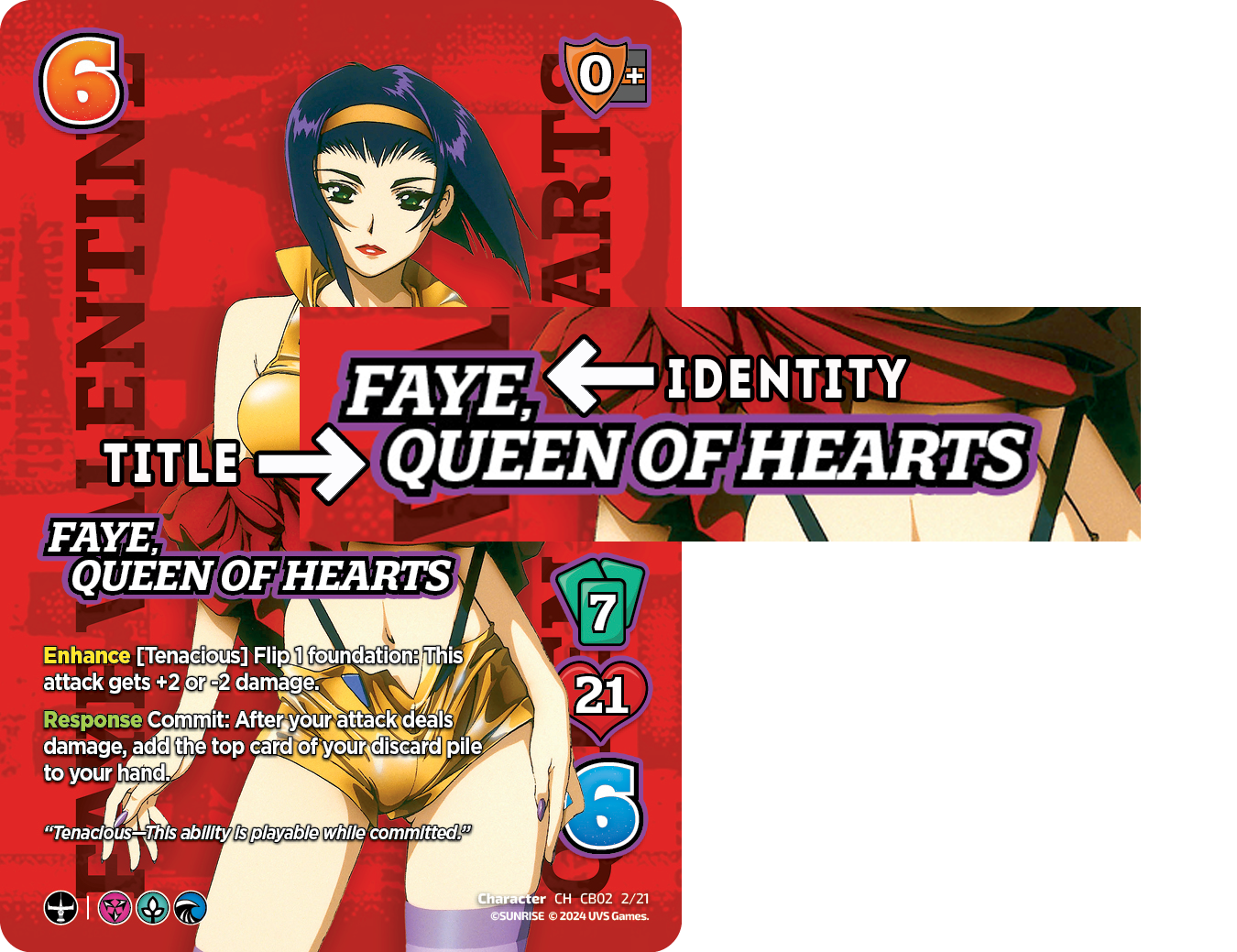
In the instances where a character’s name is followed by a comma or a line break, the version of the character will be distinguished by a title. For example, let’s look at an upcoming character from the Cowboy Bebop Challenger Series deck: Faye, Queen of Hearts. By the rules, the Identity of this character is “Faye”, while her Title is “Queen of Hearts”.
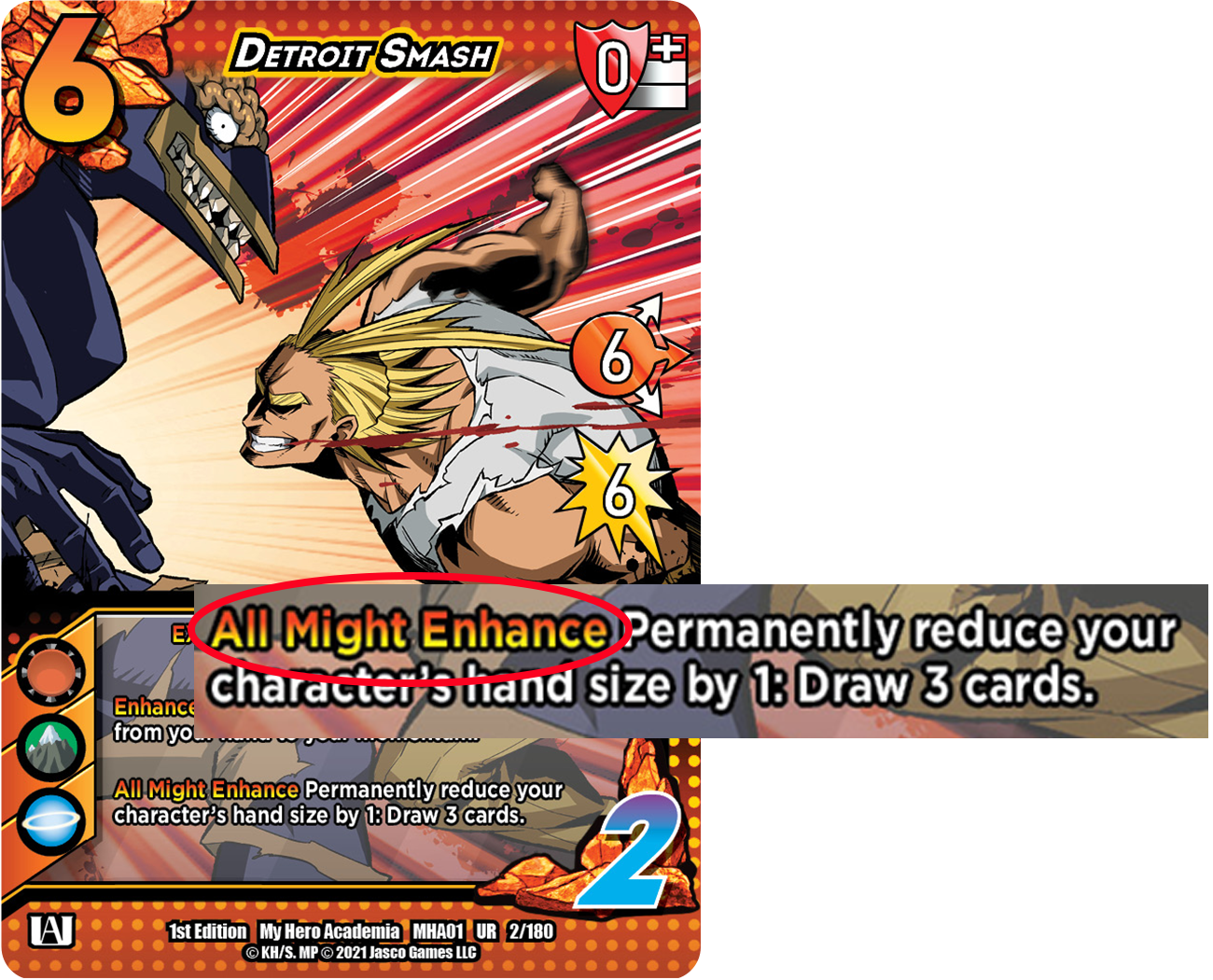
What does this mean and why is it important? Well, let’s start with Character Specific Abilities. Character specific abilities are limited to only being played by characters with that particular name. For example, Detroit Smash has an Enhance ability that is limited to characters named All Might. All Might is the identity on each of those character cards, so if we had a card named All Might, but with a title instead of a version number (say hypothetically “All Might, Symbol of Peace”), that character would still be able to use this ability.
Another reason for this is that in certain formats like Retro, characters that share an Identity but a different Title or Version can attach to your starting character, granting increased abilities and expanded options. Maintaining a way to differentiate character cards while mechanically unifying them as the same core character is important to our game system, since there are so many ways to imagine your favorite fighter.
Designating successful attacks (Attacks that dealt damage)
This one is simple enough. It can be difficult sometimes if a Combat Phase is long enough to remember exactly which attacks dealt damage and which ones didn’t. It’s already a common practice, but we are now codifying it into the rules. In gameplay, when an attack deals damage, players will now turn that attack sideways to signify that it can go to momentum. The position of a card in the card pool does not matter to any game mechanics in this instance, it is just a visual reminder to both players.
Multiple
This one is mostly important for the retro format. But with all these other updates, it felt the right time to announce this change in a legacy mechanic. We’re updating the functional process of playing Multiple abilities. The copies of the Multiple attack will no longer be created from the discarded momentum. Explaining the process of playing the Multiple ability was fairly arduous and somewhat confusing. The common practice for many players was to simply put their momentum into their card pool, but the problem with that is it creates a habit. The momentum MUST be discarded in order to pay a cost, in case of a cancel effect. Because of this, we are changing Multiple to play the top X cards of the deck as the copies, rather than the discarded momentum.
“E Discard X momentum (minimum 1, maximum the Multiple rating): Add X cards from the top of your deck to your card pool face down as multiple copies of this attack. Add those attacks to the attack stack.”
That’s all we have to cover today, but make sure to keep an eye out for the rulebook update to get posted. A lot of big things are coming down the line, and we look forward to taking that journey with the rest of you. May you have a good end of your year, and an exciting start to the next one!
-Tim Frie,
Game Designer and Rules Manager
